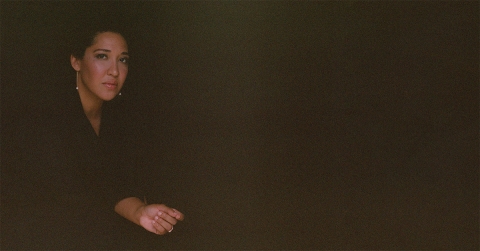By David Byrne
David Byrne reports from the Ruhr Triennale, A Century of Song, in Duisburg, Germany.
By David Byrne
Duisburg, Germany
I’m over here for a part of the RuhrTriennale called A Century of Song. The Ruhr valley was the former Germen rust belt, and in recent decades became Germany’s poorest, most depressed area—so a fair amount of money was poured in for revitalization, including arts budgets. Former factories were converted into venues and industrial ruin parks. Bassist and arranger Greg Cohen has been curating a performance series and I was invited to join him and his friends as well as the Duisburg Symphony for two shows. To prepare we have almost a week of rehearsal.
We had dinner last night and Greg talked about the roots of popular song structures. Most standards are AABA form, and many jazz pieces, being adaptations of the chord changes of standards, follow that pattern. (A lot of rock and roll and R&B is ABABCB—B being the chorus, A being the verses and C the middle 8 or bridge.)
But these structures are not static; they evolve and change over time. Greg said that ragtime—Scott Joplin, etc —used much more complex structures. He said their pieces were like potpourri cut-and-paste tunes, medleys that had a number of sections not only in different keys but even in different rhythms. (One might say that contemporary pop songs vary the rhythms on the choruses in order to raise the level of intensity in those parts — build and release.)
This variety pak song structure emerged out of practical necessity—to cater to a dancing audience. This was originally music to dance to, and the audiences were acquainted with a variety of dances, often European in origin. If a song, or even part of a song, allowed you to show what steps you knew and to dance and meet a partner then those particular rhythms were what was demanded. So the dancehall venue, and the dancers within it, shaped this music and its structures.
The influence and development of venues went further. Some of the performers in St. Louis and New Orleans began to improvise. I imagine if a certain song section and its attendant dance came into favor and became extra popular, then the audience would naturally prefer that the section go on longer. So if a smart performer had exhausted that section as written, as it naturally occurred in the song, then he or she could make the part continue longer by improvising some new sections in that same style. The dancers were “creating” the music as much as the musicians and composers were, in a way.
Popular acts got booked on the riverboats that went from St. Louis to New Orleans. These were pleasure boats, not freighters or mere transportation. In order to be heard above the noise of the paddle wheels, and probably above that of the audience, the bands had to find a way to be louder. Mandolins or tenor banjos replaced fiddles, basses were added, cellos were originally there, but were often replaced by alto banjos—and in addition the guitars and everything else hit the grooves harder. The venue had changed the music once again.
I wrote about this for CBGB and OMFUG: Thirty Years from the Home of Underground Rock—here’s an excerpt:
In my opinion it is the venue that makes the music scene happen just as much as the creativity of the musicians. There is continually and forever a pool of talent, energy, and expression waiting to be tapped—it simply needs the right place in which to express itself. […]
The space in which music is to be heard can determine what kind of music the artists create. The physical shape, acoustics, floor plan, and layout of a venue can contribute to the sound. For example, The Kitchen, which was an art-music-performance-loft in SoHo, was austere, reverberant, and echoey. The resultant music, from Phil Glass to Rys Chatham, was pretty spacey and trancelike. Jazz clubs tend to be extremely intimate. The music that results is one of details and an intricate, narrow focus of expression. Arena rock is written to be performed in an arena—it sounds and looks ridiculous in an intimate club. Symphony halls work best for classical music written during a particular era, opera halls…you get the idea. It might seem dispiriting to believe that the brick and mortar determines what form of music a creative soul pours out, but I think there is an element of truth here. Songs and performances are, one hopes, absolutely heartfelt, passionate, and true—but we both consciously and unconsciously guide our feelings, passions, and ineffable creative urges to make that which is appropriate work in the given situation.
The same process of the venue changing the music also happened in country music, especially honky-tonk. When this music began to be played in bars, to drunks and dancers alike, it needed to be loud and forceful—and the writing and instrumentation evolved to fulfill that need. Electric guitars replaced acoustic ones, drum kits were added, and rhythms got emphasized.
So how is this process happening now? In arena rock, for example, the songs are intuitively written that will song good booming out to a sea of fists in a sports arena. Some of us have seen bands used to playing arenas doing their “intimate” club dates—and often they can’t adjust. They retain their stadium gestures and grandiose musical stylings and it all just seems completely over the top and out of place.
Is music being written and recorded expressly to cater to the iPod wearer? Is music being written for an audience of one? Private music, intimate, personal—full of details and space?
Is hip hop made to sound the way it does so that it sounds good on a giant booming car audio system?
And what of the dance music of today? DJs play for dancers—their back and forth relationships and interplay with their dancing tranced out audience might be similar to that of the early jazz musicians. They can sense what the audience wants next, and they search through their box of vinyl in hopes of providing it by the next segue. Their sets, therefore, are shaped as much by their audience tastes and desires as by their own. The art is a balancing act between merely giving people what they want and surprising them with what they didn’t even know they wanted because they haven’t heard it yet.
Usually the process is a little slower than it is with DJs—most acts can’t come up with a whole new direction for their set determined by how an audience is reacting. But the next show’s set, the next day, might reflect the experience—more intimate tunes if it’s a small venue, rousing favorites if it’s a big space. And eventually, when it’s time to write more songs, they’ll be written with the past performance experiences in mind—well, for those of us who actually perform—and a kind of evolution will occur.


